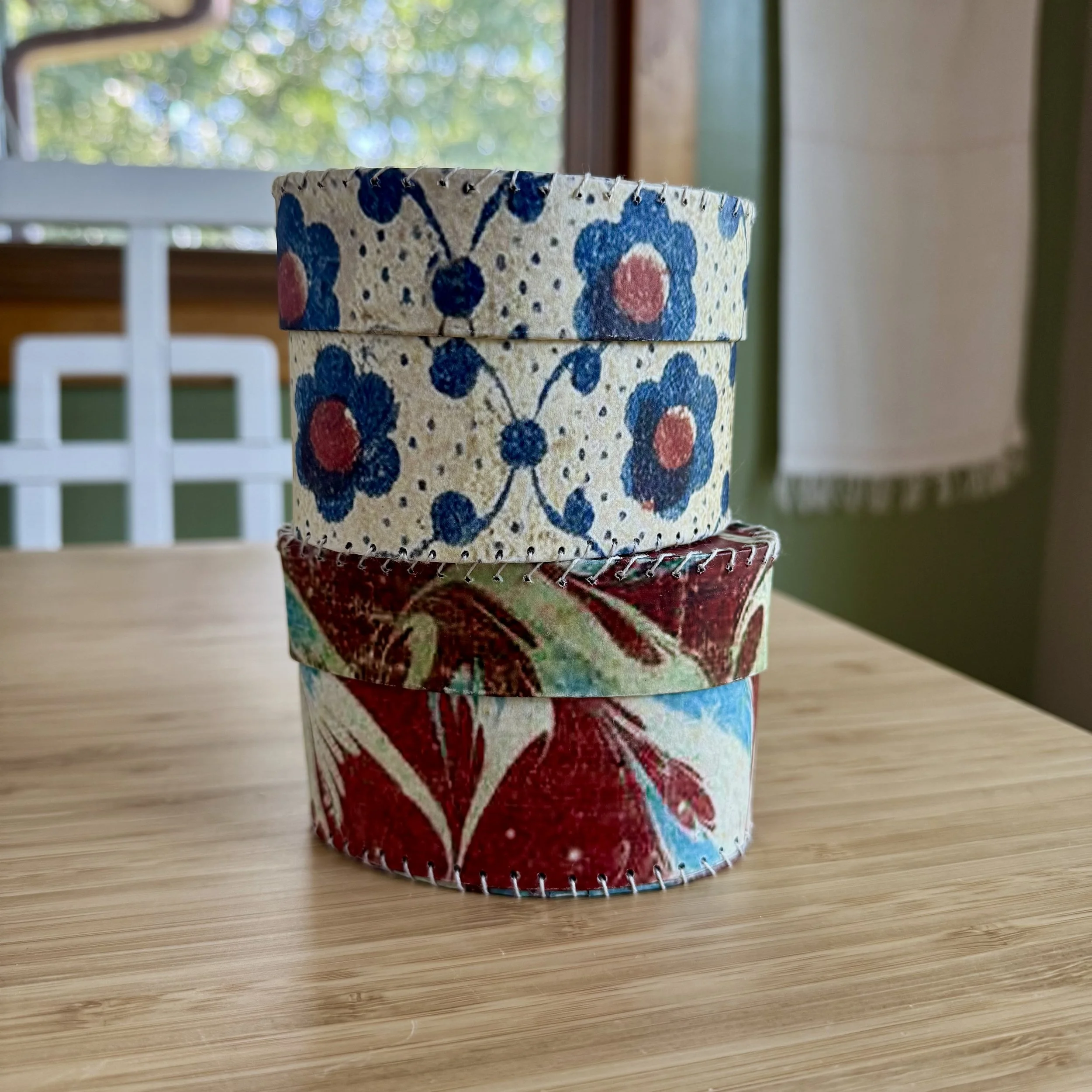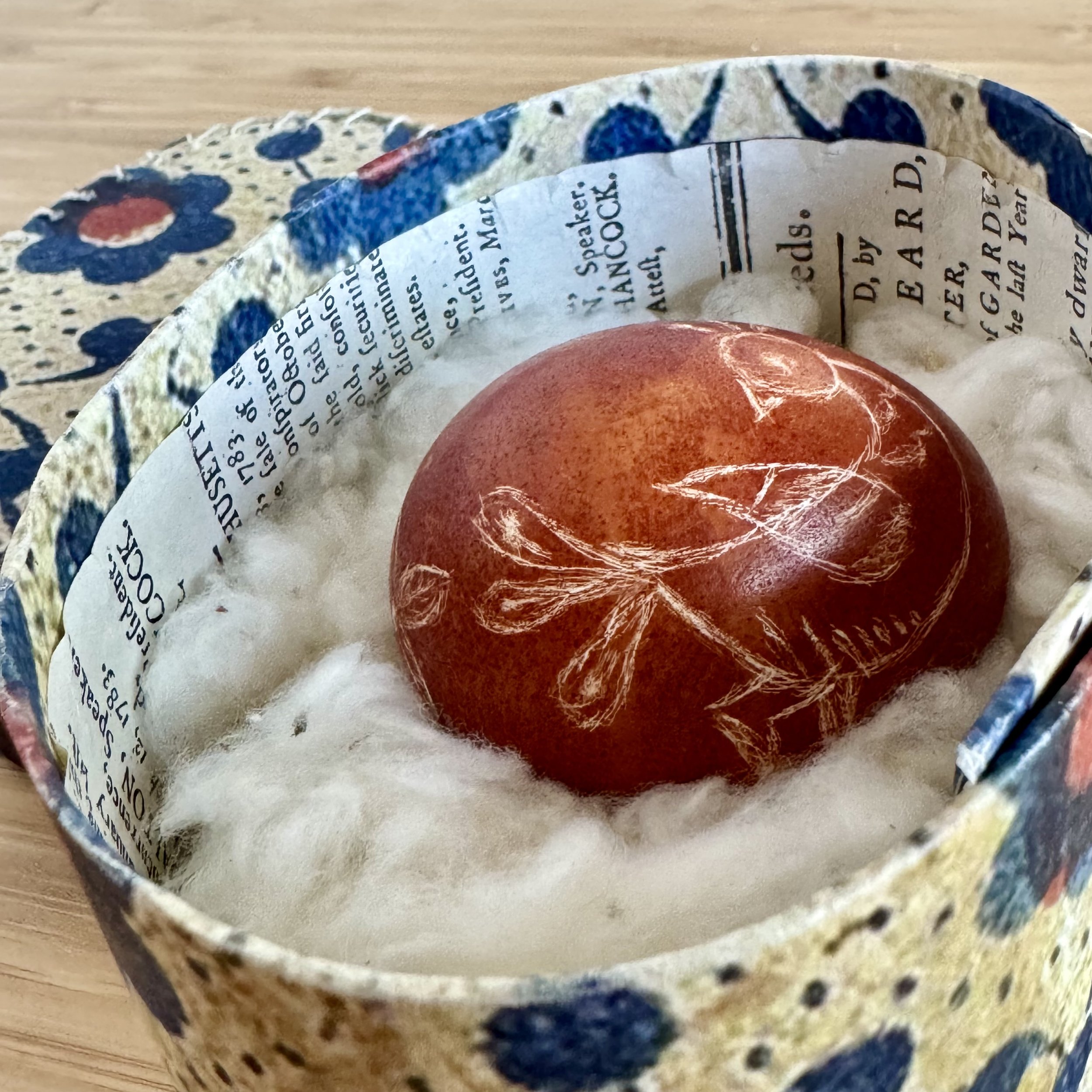Making bandboxes
This week’s post touches on two of my passions: collecting material culture and making material culture. I am captivated by eggs and collect them (decorated, wooden, ceramic). And I’m not the only one who thinks eggs are perfection. Thomas Wentworth Higginson wrote famously in 1862:
I think that, if required on pain of death to name instantly the most perfect thing in the universe, I should risk my fate on a bird’s egg.
The egg’s perfection is the basis of a great book by Tim Birkhead and a documentary by the legendary Sir David Attenborough. In my collection, I have two traditionally onion-skin-dyed and scratched Pennsylvania Dutch eggs. One was scratched by egg folk artist Elaine Vardjan and the other was scratched by me just this past Easter.
And then I read an article by Lisa Minardi (Historic Trappe) on scratched eggs in the spring issue of Early American Life. In it, she included an image of a bandbox that was used to store a scratched egg. Band boxes, or wallpaper boxes, were made of heavy pasteboard, lined in newsprint, covered in decorative paper, and then stitched together. They were used to store and transport a variety of items historically.
Wallpaper / bandbox from the Herr Collection. Courtesy of Pook & Pook Inc.
I knew that I just had to make some bandboxes for my scratched eggs, especially since the natural onion dye can fade if exposed to light for too long. Searching online, I found a tutorial from Cabin Crafts on how to make these. The tutorial was so thorough and easy to follow that my first attempts turned out really well. Like Cabin Crafts, I used the historical prints from Monahan Papers.
Contemporary handmade bandboxes
I think these boxes will be a wonderful way to store my scratched eggs for years to come.
Scratched egg by Elaine Vardjan in a contemporary bandbox
Emilius (8 August 2025), The Bullfrog Inn


